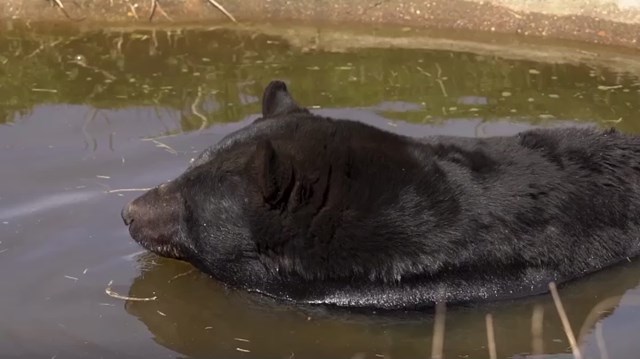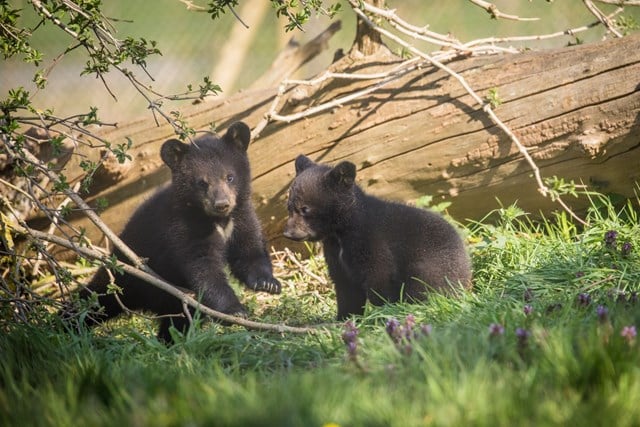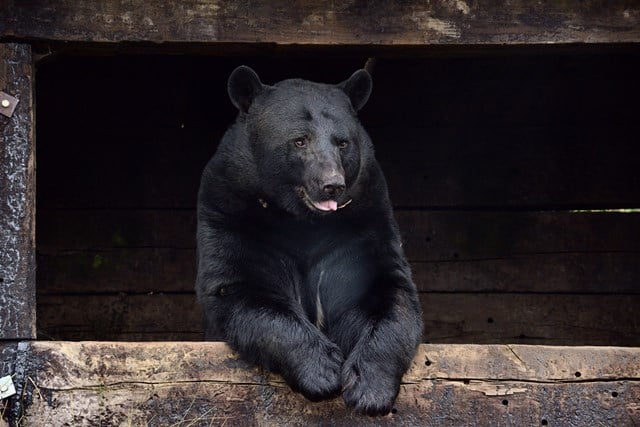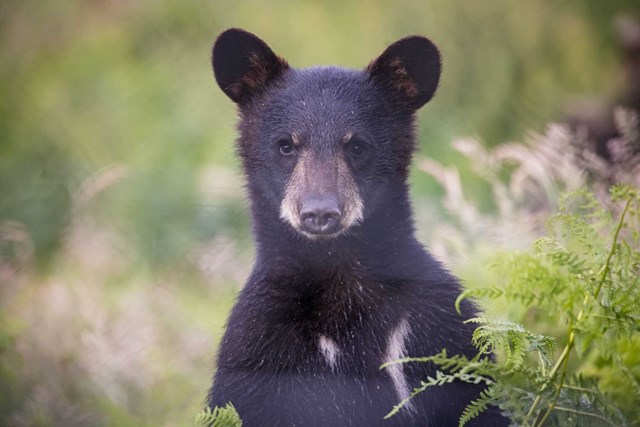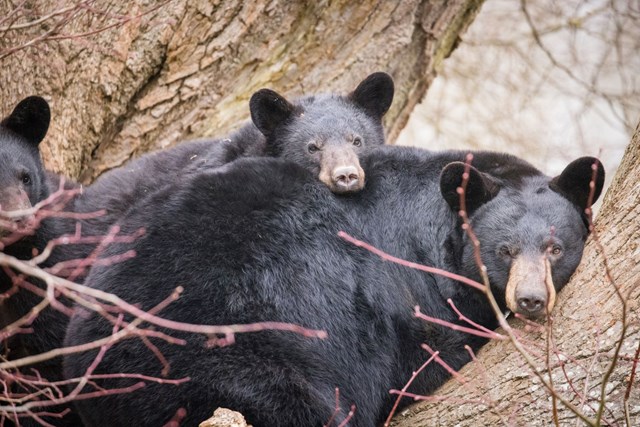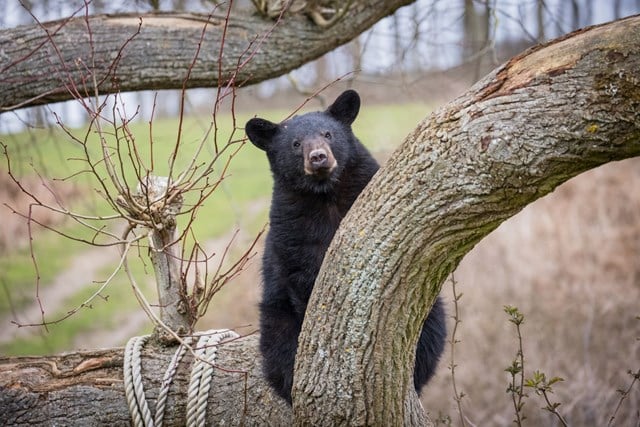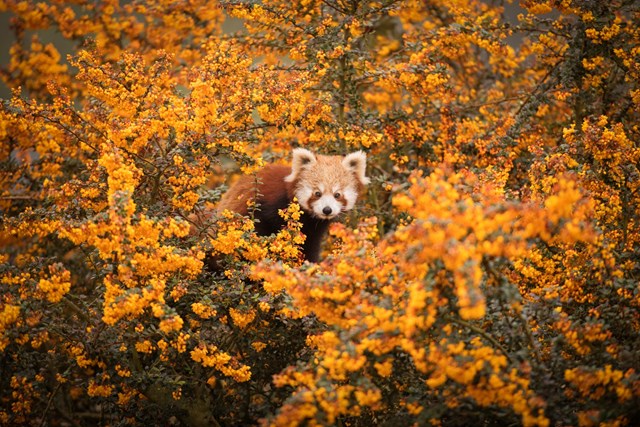North American Black Bear
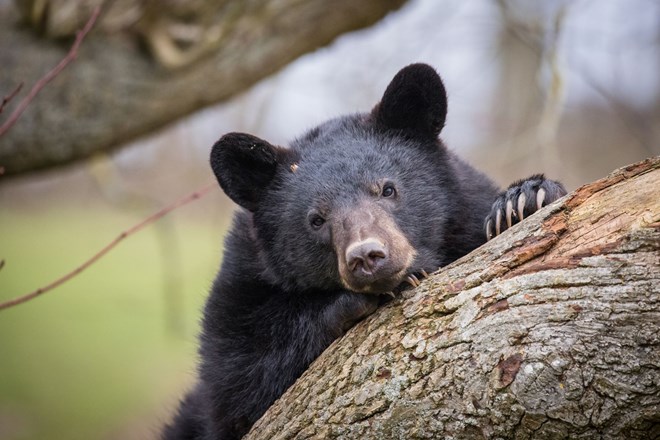
Overview
The North American black bears living at Woburn have just under a 13 acres reserve, which they roam freely within and share with the Canadian Timber wolves.
This is one of the only mixed carnivore enclosures in the UK. The Park is home to adult male Chuck, as well as three females named Indiana, Phoenix, and Dixie. The sleuth also includes juvenile male Koda, and females Georgia and Denver.
In 2022, the Park also welcomed the exciting arrival of four bear cubs in January to mother Phoenix.
All eleven of the bears live outside 365 days a year and will hibernate in their own dens through the cold months of winter.
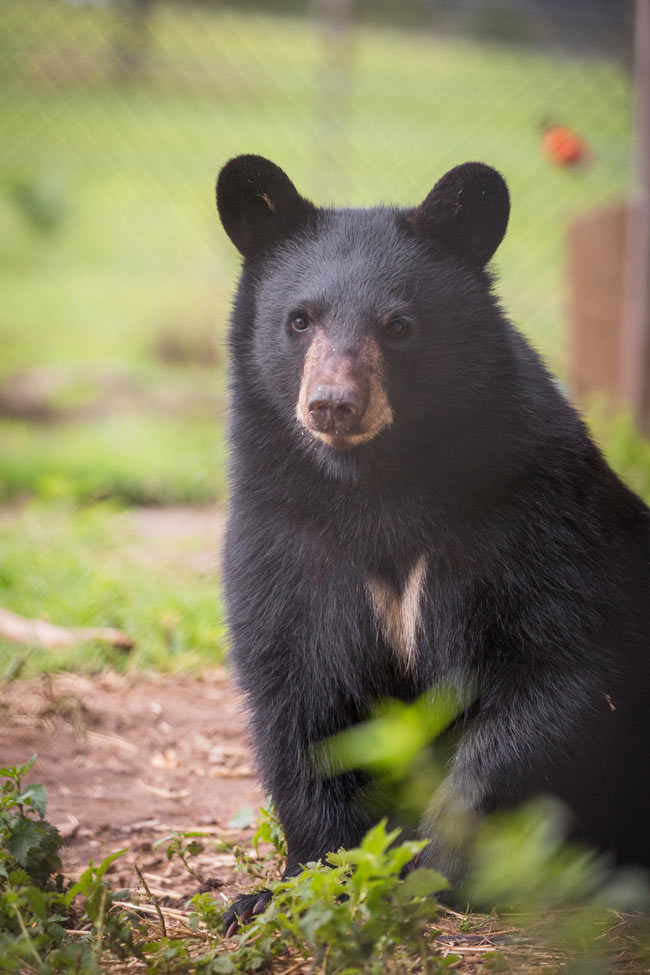
All about us
| Distribution: | North America and Canada |
|---|---|
| Habitat: | Forest areas |
| Height: | 5 to 6 ft (1.5 to 1.8 m) in length |
| Weight: | 200 to 600 lbs (90 to 270 kg) |
| Gestation Period: | 6 weeks |
| Lifespan: | 20 years on average in the wild |
| Threats: | Habitat loss and hunting |
Scientific name: Ursus americanus
Black bears are North America's most familiar and common bear, typically living in forests. They can also be found in mountains and swampy regions. Despite their name, black bears can be blue-gray or blue-black, brown, cinnamon, or even (very rarely) white.
Black bears are opportunistic eaters, most of their diet consists of grasses, roots, berries, insects and fish. In captivity this diet is supplemented with nuts and specially formulated pellets.

Black bears have stout bodies that are bulky and thickset, with a short stubby tail. Their broad head has a long straight profile, ending in a long snout.
Other notable phsyical characteristics include small black eyes; a tan or brown muzzle and pointed ears, which are noticeably a lot larger then a grizzly’s. Unusually, black bears do not have any gums, this allows them to easily twist and stretch their lips. They have a long tongue that can be manipulated into picking foods such as berries and shrubs.
Unlike grizzly bears Black bears do not have shoulder humps and their claws are shorter and more curved than other bear species, such as the sloth bear. Claws are not retractable, so they are always extended and can be used for climbing, digging and tearing
Preferring to live in dense areas of forest, they can also be found in mountain and swamp areas across Northern USA. By nature, these bears are solitary animals and will only come together during the mating season. Roaming across large territories, females can travel up to five square miles and for males it can be up to 25 square miles.
Some myths maintain that bears are slow moving and lacking in intelligence. Their longer back legs give them a lumbering gait, which can appear to make their movements slow. However, the opposite is true and in fact they are excellent climbers and can run up to 30 mph. Bears spend much of their time walking on all fours but they are able to stand and walk on their hind legs.
Additionally black bears have an amazing sense of smell, hearing and sight. They tend to have a shy nature, rather than being naturally aggressive and are only defensive when confronted. If a female feels her cubs are threatened, then she will do what is necessary to ensure survival.
Black bears reach full maturity between two and five years of age and can live well into their thirties. They will usually begin breeding at around four years of age. Female Bears are known as ‘sows’. They are known as “delayed implanters”; which means that although their mating season is May to June, the implantation of the fertilized egg is delayed until the winter months, around early December. This is so the female can assess her physical condition and ability to provide for the cubs she may have. Gestation is roughly 6 weeks, with cubs born whilst the female is still in her winter den in January / February.
Black bears are omnivorous, with a diet that consists of both meat and plant matter; including fruit, nuts and fresh fish. Bears are also opportunist feeders and will eat almost anything. This adaptation has ensured their survival and it is also the reason bears have been known to rummage through human waste bins.
The volume of food consumed varies throughout the year, with large quanties required in advance of the winter months. Bears gorge on high fat foods to increase their body weight and ensure survial through the dormant period of hibernation.
This is a critical survival technique for black bears and come spring time, food intake will change to a mixture of fats, carbohydrates and vitamins. This diet provides the energy needed to reawaken and replace the weight lost through winter.
In captivity bears are normally kept in small groups, but at Woburn Safari Park the large space of the enclosure allows for more then one male. Each male will claim separate territories within the space. Bears are usually solitary animals, unless the males are offspring, and new males will not usually be welcomed into the enclosure. The incumbent male will defend his territory, which can lead to fighting. When females come into estrus drawing males attention, males will become competitive and the strongest male will breed with her; as they would in the wild. Keepers will keep a keen eye on bears and are trained to deal with all potential situations that can occur between male bears, with the welfare of each individual animal in mind. Keepers will intervene only if fighting becomes severe. The park vehicles are used to seperate bears and keep them apart when needed.
A varied diet is important for bears in captivity. Seasonal changes in the wild means different foods will naturally become available at different times of the year e.g. salmon migrating down rivers. In order to replicate this natural diet, seasonal variation is introduced by keepers with fruits, nuts and seeds.
Bears have a great sense of smell and rely on their sense of smell to forage for food. Keepers will scatter bear feeds around the enclosure or hide them under log piles, so they can forage for foods as they would in the wild. This stimulates their sense of smell and encourages natural behaviours.
Black Bears are most active in the summer months which is when enrichment can be most benefical. Providing new scents, such as different types of flora, fruits and from other animals will keep them active, healthy and encourage the foraging behaviour.
The main threats towards black bears is the destruction of their habitat. This is mainly through deforestation and the increase in land claimed for urban development and agricultural. They are also be hunted by humans for sport and to keep them from entering into local towns and villages.
Conservation efforts have been effective and in most areas black bear populations are increasing, or are sustained with managed hunting.
In areas with human populations, conflicts can occur because bears are very attracted to human foods, livestock and livestock feed. Since bears are large, strong animals, many people fear them and resent the damage they can cause. Peaceful co-existence can occur in shared landscapes as long as humans take the necessary steps to ensure the relationship is a positive one. Wild areas with little human encroachment continue to be the most important habitat for bears.
